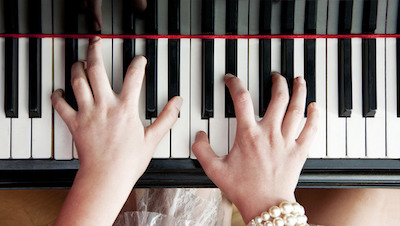Heading online today can give you a world of information at your fingertips. It can also leave you confused.
If you’ve been searching for a piano teacher, you might have noticed some teachers listing their preferred methods of teaching. But what does it mean? And is one better than the other?
Over the history of piano playing, piano pedagogy has changed dramatically over time. During the earliest periods, only wealthy families could afford keyboard instruments and instruction from a neighbor or teacher. Students were often taught to curl their fingers like holding a small ball. Now we know it’s more important to teach with fingers curved naturally, softly rounded.
Other aspects have changed and developed as well. The following methods are some of the most common teaching methods you’ll find as you search for the right instructor.
Suzuki Method
The late Japanese violinist Shin’ichi Suzuki created the Suzuki method, which is one of the most popular methods, especially with small children. Suzuki believed that everyone could learn music in similar fashion to how we learn language. It’s all about learning from your environment. If the pedagogical steps are small enough and instruments are scaled down to a child’s size, through positive and encouraging environment, a child would naturally perform at very high levels. Primary criticism is that Suzuki focuses on memorization and group playing, with poor sight reading ability overall. Many believe Suzuki is good during early curriculum with developing other styles as you move forward.
Bastien Piano Basics
The Bastien Piano Basics is made up of five levels of learning – primer through a more challenging level four. They are filled with colorful illustrations and fun themes. Each level is correlated with theory and technique built into the same lesson. Critics say that emphasis through this method focuses on position playing which results in students lacking sight reading skills. Learners often focus in on music that adheres to the position of the piece as opposed to more challenging music.
The Music Tree
Frances Clark and Louise Goss created the Music Tree which emphasizes sight reading, rhythm, theory and interrupted reading. This means a higher recognition of distances between notes, helping prepare students for more real world music playing capabilities. It also helps students read music faster, which can help them develop higher musicality skills overall.
While these are just a few of the many different teaching methods out there today, it’s important to remember that teaching is fluid. As a player learns, it’s important to adjust to ensure a rich education overall.
What piano playing method do you prefer?

